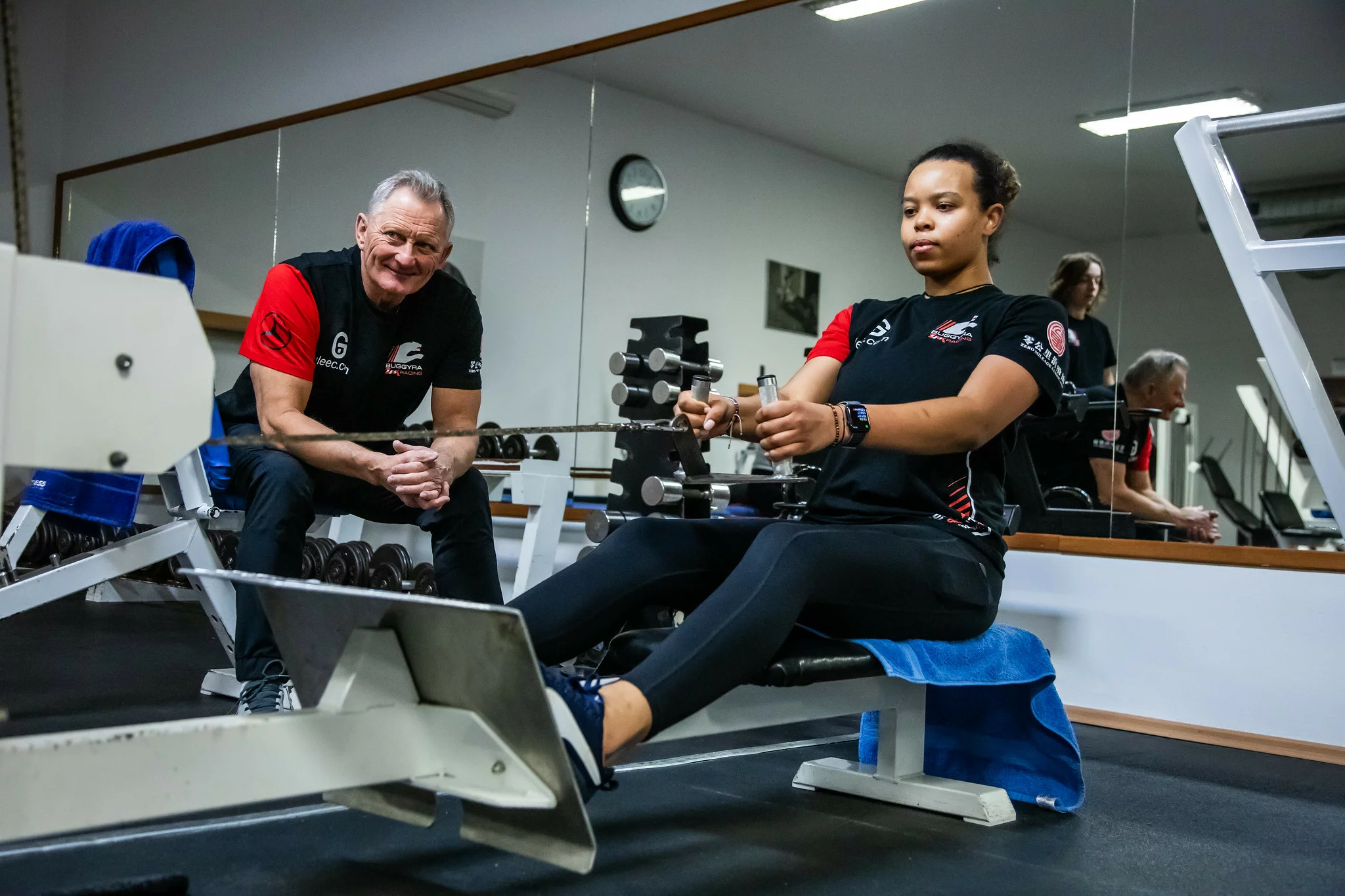Aliyyah Koloc is a 19-year-old racing driver competing in the 24h Series as well as top-tier offroad-rallying like the Middle East Cross Country Bajas and the famous Dakar Rally. This in itself is a rare and interesting combination as it requires a wide variety of driving and mental skills as well as physical fitness.
| The latter might not be something that routinely comes to mind when thinking of racing drivers. However, motorsport is physically very demanding, and the two different categories put different strains on the body. So how does Aliyyah train to keep up with her very demanding racing schedule?
“I work with a company called 3.2.1 Perform, based close to Annecy in France, specializing in physical and mental training for race drivers. They have provided me with a fitness program that I follow when I am not doing one of their training camps. In addition, I do some exercises of my own when I feel like I want to mix it up. It is mostly strength and some cardio,” Aliyyah explains her training schedule. “After my first race in a T1+ car earlier this year, the highest category in off-road racing, I realized that I needed to improve my wrist strength because after a lot of shifting, I had sore wrists!” Different series, different strains on the body To improve particular issues like her wrist strength, Aliyyah works with a coach specializing in the needs of rally drivers. Track racing is not the same as rallying, and different parts of a racer’s body are put to the test. In track racing, particularly Formula 1, neck training is very important as a lot of forces are put on a driver’s neck. In IndyCar, where there is no power steering like in F1, drivers put a lot of effort into training their shoulders and arm strength. Rallying, on the other hand, puts a lot of strain on the wrists. As she has a heavy travel schedule, Aliyyah does a lot of training by herself, or she trains together with her father in the gym. “I usually train five to six days a week, with one or two rest days when I am at home. But when I am traveling, it gets tricky to train properly and there isn’t a gym everywhere. So then I usually do bodyweight exercises.” Working with a specialized coach Working with 3.2.1 Perform gives her a routine, constant feedback, and motivation from experienced coaches. A few times a year, Aliyyah spends seven to ten days in their training facility. “Every time I go there, I see many other drivers working out, some of them quite famous. It is a great opportunity to see where you are compared to them physically, but also mentally. Working with 3.2.1 Perform has really improved my fitness level,” Aliyyah says. When at the camp, Aliyyah trains a lot on spin bikes, she does mobility and strength exercises, and also stretching and coordination exercises with balls. Another important area for race drivers is reaction, so at 3.2.1 Perform Aliyyah trains her reaction with a light wall where you have to hit the light as soon as it lights up. “They tell me that I have a very good hand coordination which I think comes from my time playing tennis,” the 19-year-old explains. Race preparations on a physical level Every time Aliyyah leaves the training camp, she takes away a new program tailored to her current requirements. It is designed to last for a few weeks, so she can train at her rhythm and in line with her racing schedule. Talking about her racing preparation, Aliyyah explains: “Just before a race, I do a little less full-strength and some more long cardio training, like biking, but no heavy training. And directly before I get into the car, I warm up with rubber bands and the lights panel for my reaction. I also do some dynamic stretching. And for my rallies, I am now also putting my focus on warming up my wrists!” Nutrition is another important aspect When it comes to nutrition, Aliyyah doesn’t follow a special diet. “I just try to eat healthy because with all the traveling I do, keeping a particular diet is not easy. Just before a race, I am not able to eat much anyway, and I usually just have a protein shake and some fruit. Hydration is very important too, but I am struggling a little bit with it, particularly during rallies.” 3.2.1 Perform also provides her with a nutrition plan for when she is driving and when she is not. “Strangely, I can eat a little better at circuits when I can eat some eggs, fruit, and yogurt. Before a rally, it is mostly just a shake and some fruit because I am so nervous! I think this is because at a rally there are more unexpected things that can happen, and I am still gaining experience. It is only after the race when I get really hungry!” she says with a big smile. |



